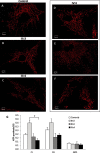'Behr syndrome' with OPA1 compound heterozygote mutations
- PMID: 25146916
- PMCID: PMC4441076
- DOI: 10.1093/brain/awu234
'Behr syndrome' with OPA1 compound heterozygote mutations
Figures


Comment in
-
Reply: 'Behr syndrome' with OPA1 compound heterozygote mutations.Brain. 2015 Jan;138(Pt 1):e322. doi: 10.1093/brain/awu235. Epub 2014 Aug 21. Brain. 2015. PMID: 25146915 Free PMC article. No abstract available.
Comment on
-
Multi-system neurological disease is common in patients with OPA1 mutations.Brain. 2010 Mar;133(Pt 3):771-86. doi: 10.1093/brain/awq007. Epub 2010 Feb 15. Brain. 2010. PMID: 20157015 Free PMC article.
References
-
- Amati-Bonneau P, Valentino ML, Reynier P, Gallardo ME, Bornstein B, Boissière A, et al. OPA1 mutations induce mitochondrial DNA instability and optic atrophy ‘plus' phenotypes. Brain. 2008;131:338–51. - PubMed
-
- Behr C. Die komplizierte, hereditar-familiare Optikusatrophie des Kindesalters – ein bisher nicht beschriebener Symptomkomplex. Klin Mbl Augenheilkd. 1909;47:138–60.
-
- Costeff H, Gadoth N, Apter N, Prialnic M, Savir H. A familial syndrome of infantile optic atrophy, movement disorder, and spastic paraplegia. Neurology. 1989;39:595–7. - PubMed
Publication types
MeSH terms
Substances
Grants and funding
LinkOut - more resources
Full Text Sources
Other Literature Sources
Molecular Biology Databases

